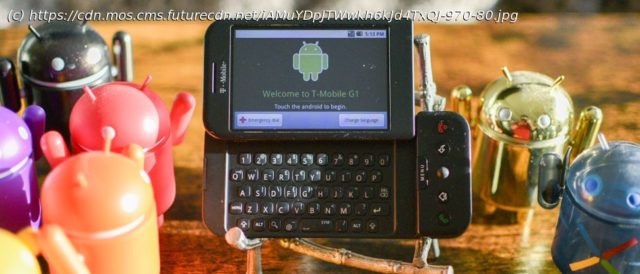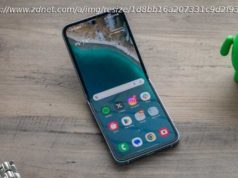The latest Opinion,/opinions,,opinions, breaking news, comment, reviews and features from the experts at TechRadar
The HTC Dream / T-Mobile G1 is fifteen years old as of September 23. This first Android phone was launched in 2008 as the Dream in Europe, then a few weeks later as the T-Mobile exclusive G1. Looking at the phone now, it’s symbolic of Android’s promise, and endemic of everything that has gone wrong since the Apple / Google duopoly of the smartphone world took hold.
For a while, if you wanted an Android phone in the US, you needed to go with T-Mobile, just as iPhone buyers were forced to use AT&T for the first four generations. Carriers wanted the best phones as exclusives, and phone makers were happy to oblige. That’s one of the many ideas and features that shaped this phone, proving just how much the phone world has changed.
I’d love to show you my T-Mobile G1 in action, because I still have it and it miraculously still holds a charge and powers on, even after fifteen years. I bought my phone on day one, even though I was also borrowing a review unit. I knew I wanted one to own and keep. It was so unique, and it still is, that it’s a standout in my collection.
Unfortunately, I can’t get past the activation screen. The T-Mobile G1 required an active SIM card to work. Then you need to log into your Google Account, or create a new one, or else you can’t use the phone at all. The SIM card it uses is an older version, and the cards have changed twice since then. I tried using my microSIM card in the T-Mobile G1, with an adapter, but alas, the phone from 2008 would not recognize my 2023 technology.
That’s okay, because the hardware itself is enough to marvel over. It’s such a compilation of bad smartphone ideas that it’s essentially the antithesis of everything we expect from the best smartphones today. Starting with that SIM lockdown, carrier exclusivity, and required Google login, it’s a relief that the smartphone world has learned so many lessons since the days of the first Android phone.The HTC Dream had a keyboard, and that’s everything you need to know
The HTC Dream has a keyboard, and if that seems a strange decision, it would have been almost as strange in 2008 for this smartphone to launch without a keyboard. While the new iPhone was quickly catching on, Apple was still jockeying for second place behind the dominant smartphone maker, Research In Motion (RIM). You’ve probably heard of RIM’s popular phone brand: BlackBerry.
I saw an early prototype of the first Android phone well before it was launched, and it did not look like the HTC Dream. It looked like a BlackBerry. It was a flat slab with a screen on the top half and a keyboard on the bottom. It had function buttons between the screen and the keys. In total, it looked nothing like the HTC Dream, because Android was conceived to compete with BlackBerry. Then the iPhone came along.
I don’t need to explain what the iPhone did to smartphones. I can just hold up a BlackBerry on one end and an iPhone on the other with every other smartphone in between, and it looks like the famous March of Progress illustration showing the evolution of homo sapiens. We thought we were so smart using the BlackBerry and sending emails from our phones, but we were actually living in caves and wearing loincloths compared to today’s devices.
The HTC Dream was built by a company that specialized in Windows Mobile phones. HTC made a slew of carrier-branded pocket computers like the HTC Titan that could run Windows Mobile and came feature packed. They had sliding keyboards that hid (thickly) behind the display, and could even tilt slightly to sit up when open, like a tiny laptop.
It made sense for HTC to make a sliding keyboard phone, that was its specialty. The HTC Dream has a unique sliding mechanism that swings out in an arc. It feels more like a phone from the SideKick family (also a T-Mobile exclusive) than a professional Windows Mobile phone. Sadly, it also feels cheap compared to the more professional smartphones HTC made.
The keyboard keys are tiny. With plenty of practice, I was proficient typing on these tiny keys, but the little bubbles barely protrude above the surface of the bottom half. My Google password has become incredibly complicated since I bought this phone in 2008; it required slow, precise typing to enter it accurately.
That said, it’s kind of amazing to have a Shift button on a phone for capital letters. To be able to quickly tap Alt- and then a number to get the symbol I need. I miss it. I miss having real buttons, instead of just a touchscreen. I miss the unfussiness of a real keyboard.






